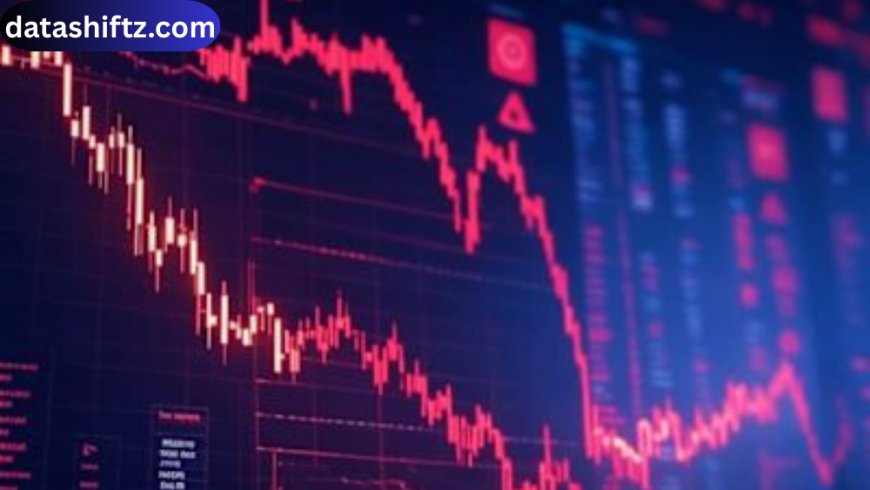Sensex and Nifty: An In-Depth Look at the Indian Stock Market

Introduction
The Indian stock market is a vital component of the country's economy, providing a platform for companies to raise capital and investors to grow their wealth. Among the key indicators of market performance are the BSE Sensex and the NSE Nifty 50. These indices track the performance of top companies in India and are widely used by investors to gauge market sentiment. Understanding the dynamics of Sensex and Nifty is crucial for anyone interested in trading, investing, or economic analysis.
Understanding Sensex and Nifty
What is Sensex?
The BSE Sensex, or the Bombay Stock Exchange Sensitive Index, was introduced in 1986. It comprises 30 of the largest and most actively traded stocks on the BSE. Sensex serves as a barometer of the Indian economy and reflects investor confidence in the market. Companies included in Sensex span sectors such as banking, IT, energy, and consumer goods.
What is Nifty?
The NSE Nifty 50, introduced in 1996 by the National Stock Exchange of India, is a benchmark index of 50 major stocks representing diverse sectors. Nifty provides a broader perspective of the Indian stock market and is widely used for derivatives trading. It reflects market trends and investor sentiment, making it an essential tool for financial analysts and investors.
Key Differences Between Sensex and Nifty
| Feature | Sensex | Nifty 50 |
|---|---|---|
| Number of Stocks | 30 | 50 |
| Launch Year | 1986 | 1996 |
| Exchange | Bombay Stock Exchange (BSE) | National Stock Exchange (NSE) |
| Sector Coverage | Major sectors but less diversified | Broad sector representation |
| Usage | Market barometer, investor sentiment | Benchmark for derivatives and funds |
Recent Trends and Market Performance
Sensex Performance
In 2025, Sensex has demonstrated remarkable resilience, touching all-time highs amid a volatile global environment. Strong corporate earnings, robust foreign investment inflows, and positive economic indicators have supported its growth. Key contributors include companies in the IT, financial services, and consumer sectors.
Nifty Performance
Nifty 50 has also shown significant growth, reflecting investor confidence in India's corporate sector. Its diversified nature allows it to be a reliable benchmark for portfolio management and trading strategies. Key sectors driving Nifty include IT services, banking, pharma, and energy.
Factors Affecting Market Movement
-
Global Economic Conditions – Changes in the US Fed policy, oil prices, and geopolitical tensions affect investor sentiment.
-
Domestic Policies – Tax reforms, government initiatives, and infrastructure projects influence stock prices.
-
Corporate Earnings – Quarterly results of major companies impact both Sensex and Nifty performance.
-
Investor Sentiment – Market movements are often driven by domestic and foreign institutional investors.
Investing in Sensex and Nifty
Direct Stock Investment
Investors can invest directly in stocks that are part of Sensex or Nifty. This approach requires research, understanding of market trends, and risk management.
Mutual Funds and ETFs
Mutual funds and Exchange-Traded Funds (ETFs) allow investors to gain exposure to Sensex or Nifty without purchasing individual stocks. These funds mirror the performance of the indices and are ideal for long-term investment.
Trading Strategies
-
Long-term Investing – Buying and holding stocks or index funds to benefit from long-term market growth.
-
Short-term Trading – Using technical analysis and market news to profit from short-term movements.
-
Derivatives Trading – Futures and options on Sensex and Nifty allow sophisticated strategies, hedging, and leveraged trading.
Sensex and Nifty Key Data (September 2025)
| Index | Current Level | 52-Week High | 52-Week Low | Market Cap Contribution | Sector Leaders |
|---|---|---|---|---|---|
| Sensex | 73,500 | 75,200 | 65,800 | IT, Banking, Pharma | TCS, Reliance, HDFC |
| Nifty 50 | 21,950 | 22,400 | 19,600 | IT, Energy, Financials | Infosys, ICICI, SBI |
Benefits of Monitoring Sensex and Nifty
-
Market Indicator – Provides insight into overall market performance.
-
Investment Benchmark – Helps measure the performance of portfolios and mutual funds.
-
Risk Assessment – Allows investors to assess volatility and market trends.
-
Economic Health – Reflects investor confidence and economic growth.
-
Trading Decisions – Guides traders in short-term and long-term strategies.
-
Sector Analysis – Helps identify strong and weak sectors in the market.
-
Diversification Tool – Nifty-based ETFs allow diversified exposure.
-
Liquidity Insights – High trading volumes indicate liquidity and market stability.
-
Global Comparison – Enables comparison with international indices like Dow Jones and S&P 500.
-
Policy Impact – Shows effects of government policy on market trends.
Common Challenges in the Stock Market
Volatility
Both Sensex and Nifty are subject to short-term volatility due to global events, economic policies, and investor sentiment.
Risk of Loss
Stock market investments carry inherent risk. Market downturns can affect portfolio value, emphasizing the need for research and diversification.
Information Overload
Investors are often overwhelmed by market news, technical charts, and financial data. Proper analysis is crucial to make informed decisions.
Future Outlook
India’s stock market is expected to continue growing, supported by economic reforms, increasing foreign investments, and technological advancements. Both Sensex and Nifty are likely to reach new milestones, providing opportunities for investors and traders. Analysts suggest focusing on sectors like IT, renewable energy, and pharmaceuticals for potential growth.
Conclusion
Understanding Sensex and Nifty is essential for anyone participating in the Indian stock market. These indices serve as benchmarks, reflect economic health, and guide investment decisions. While market volatility is inevitable, informed strategies, diversification, and long-term planning can help investors navigate the complexities of stock trading.
Whether you are an experienced investor or a beginner, tracking Sensex and Nifty provides valuable insights into the performance of India’s top companies and overall market trends, ensuring informed and strategic financial decisions.






























